


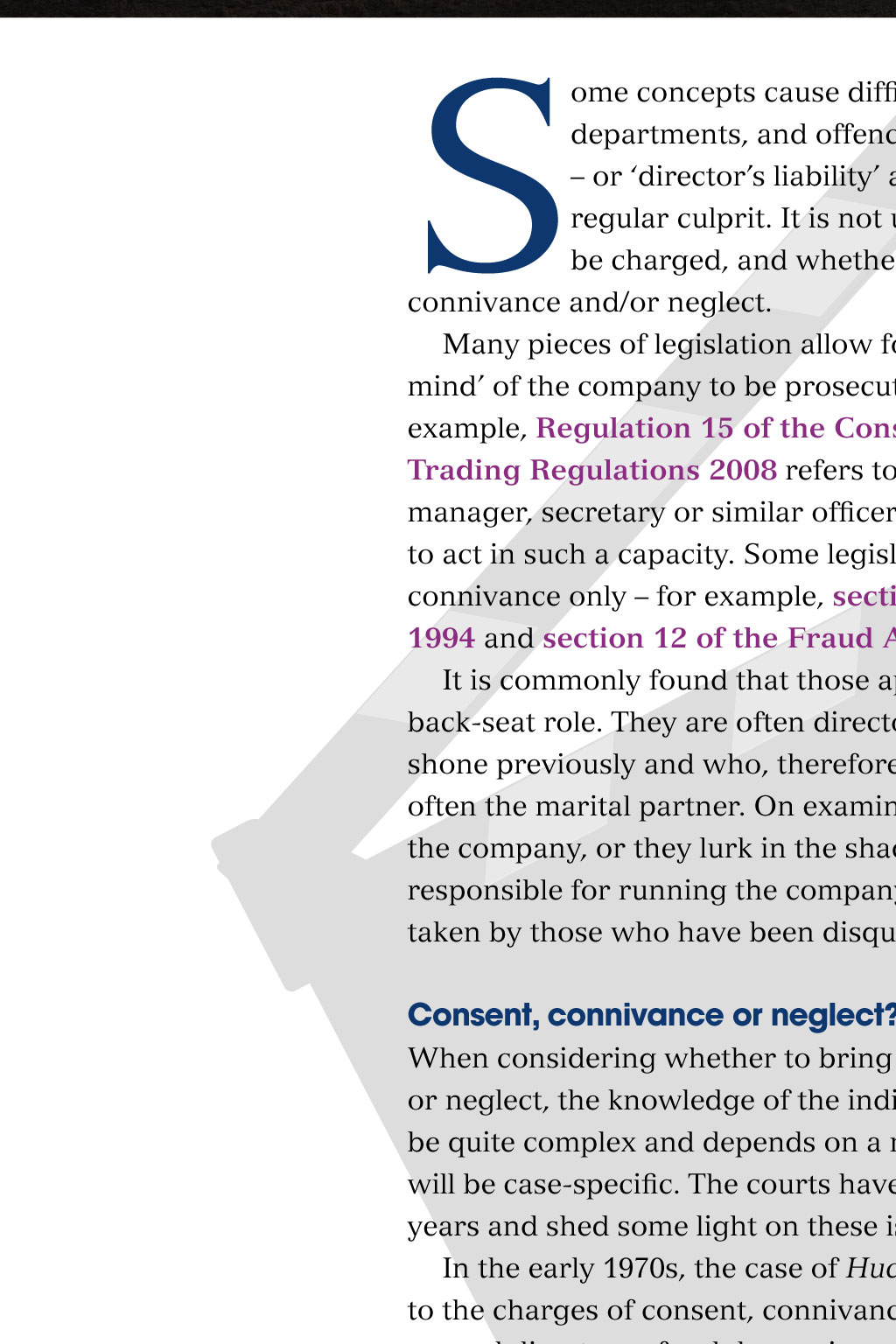
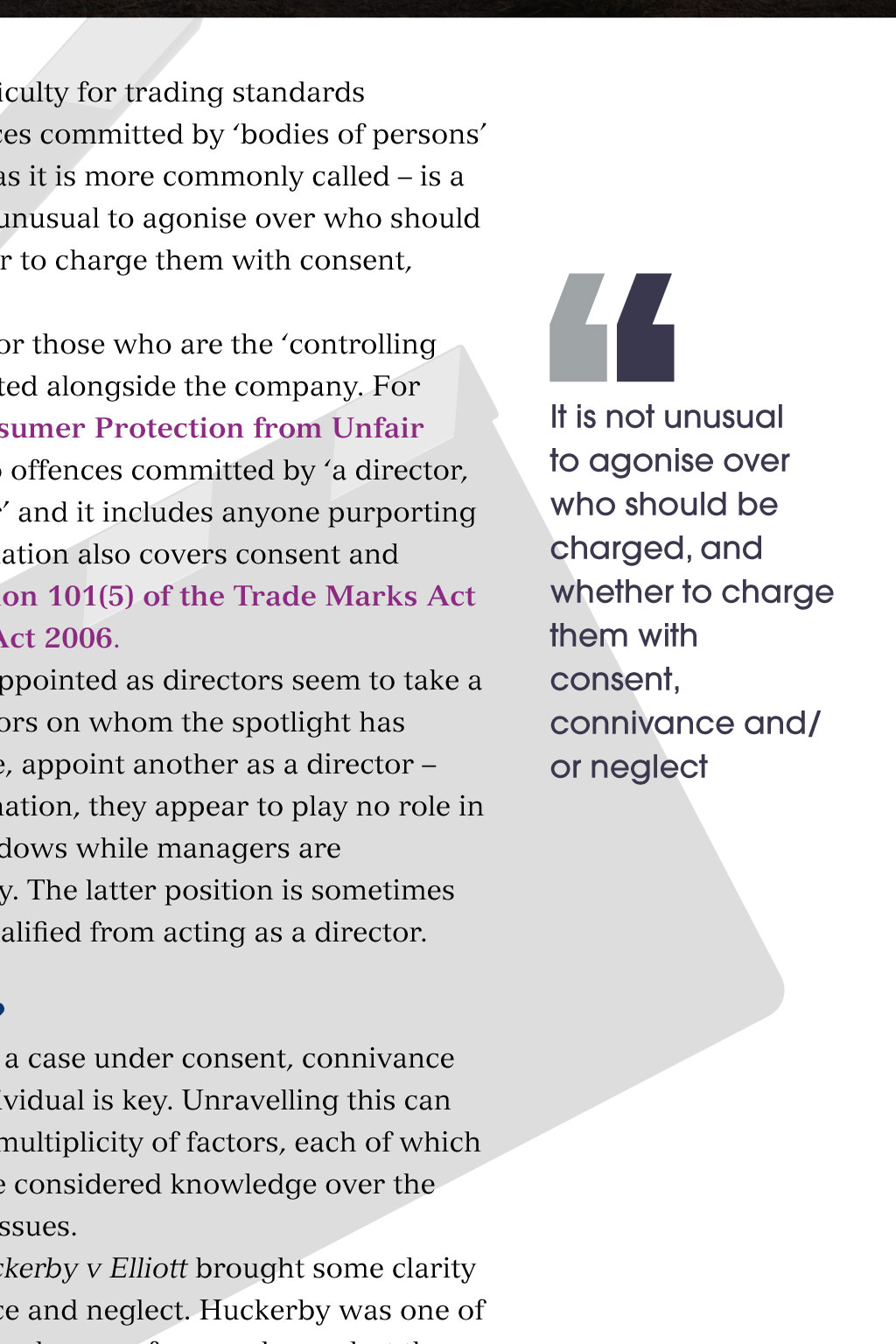
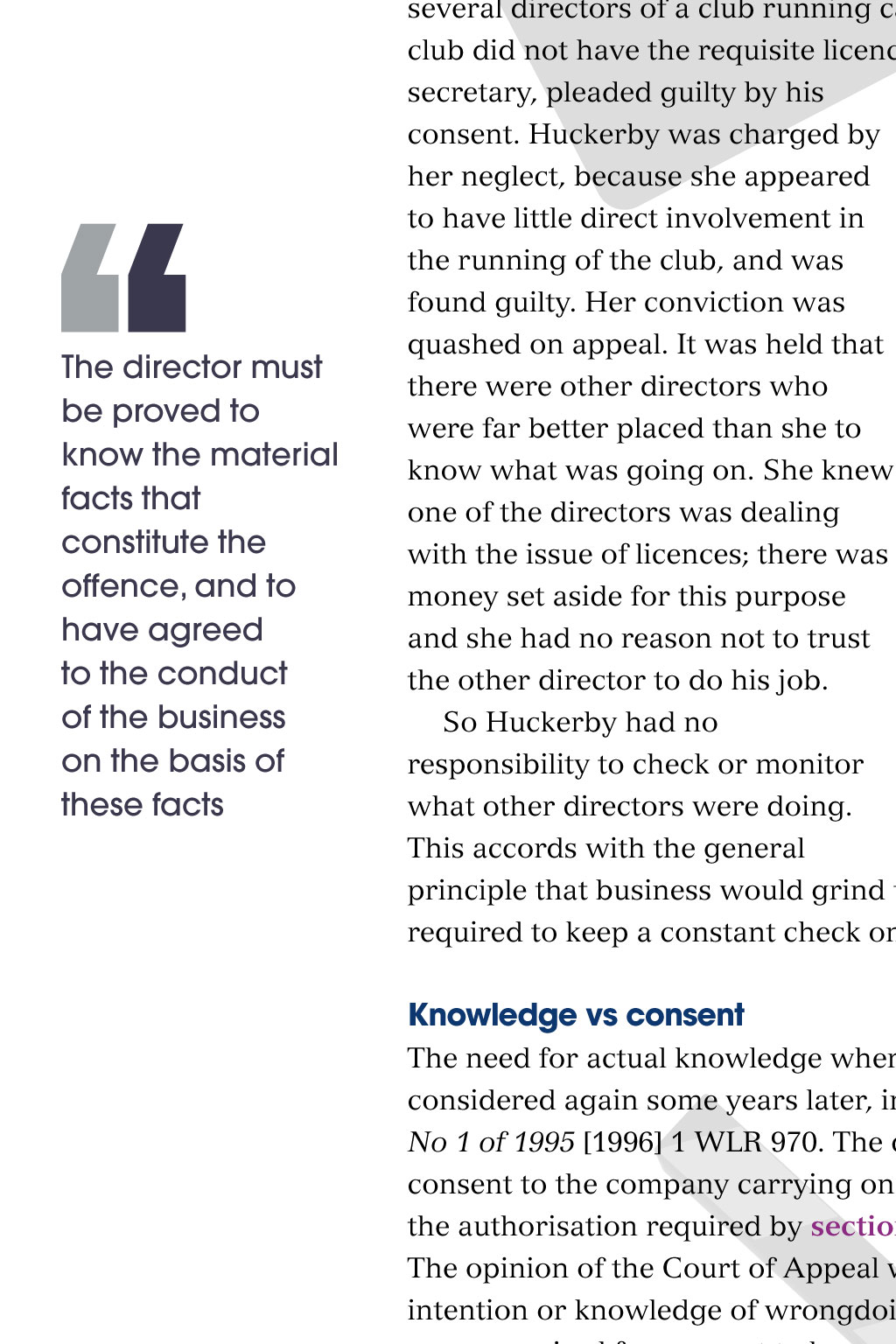
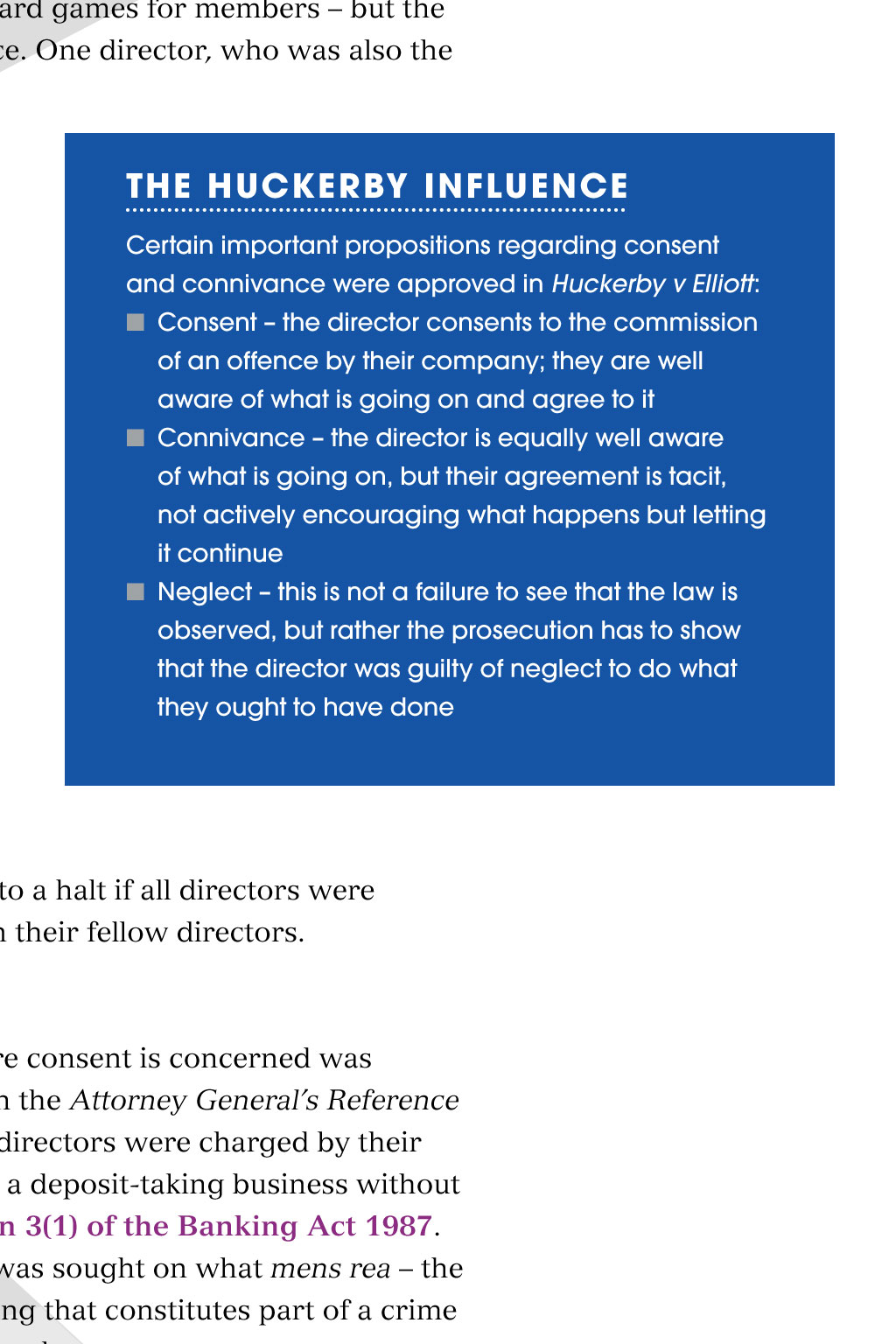
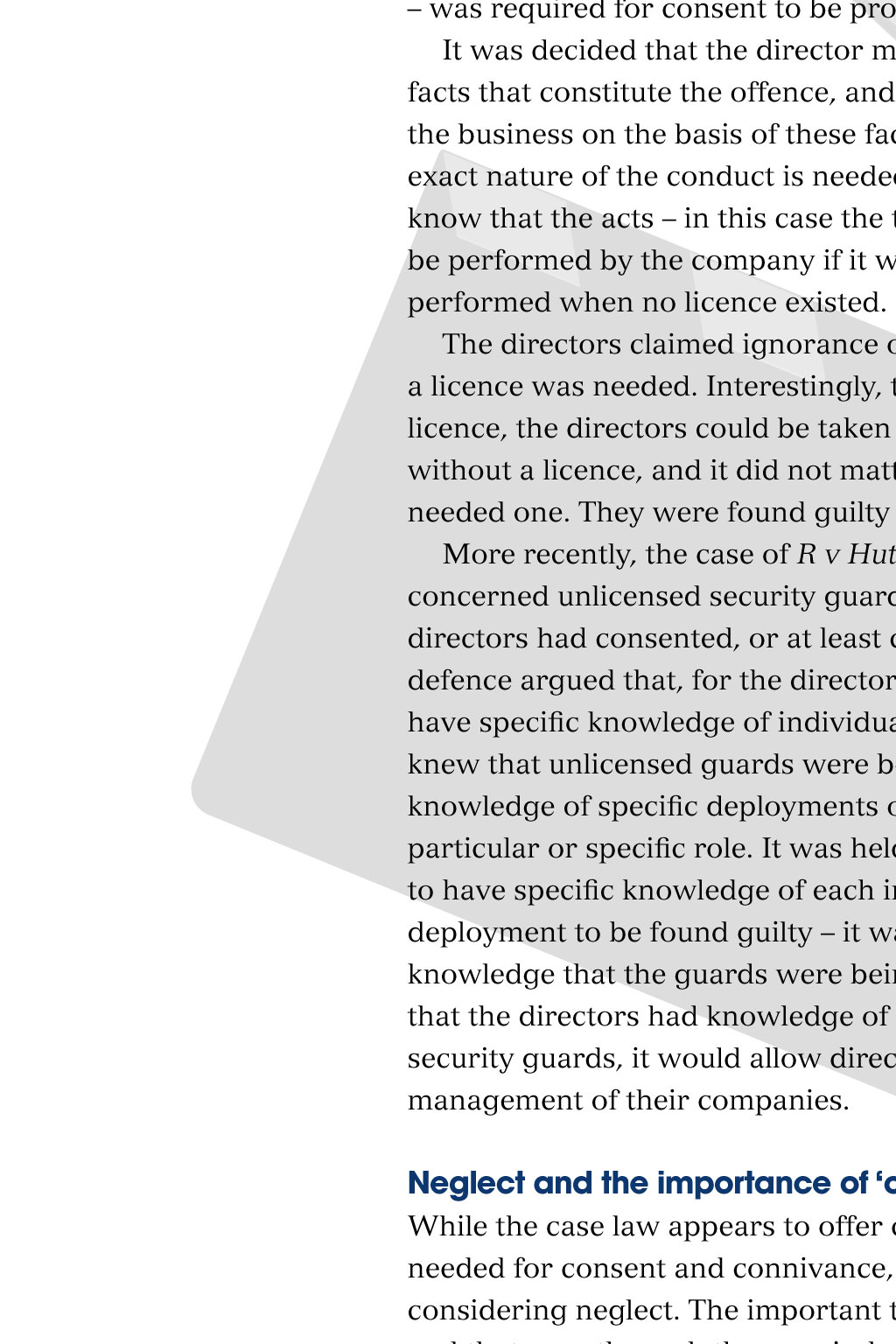
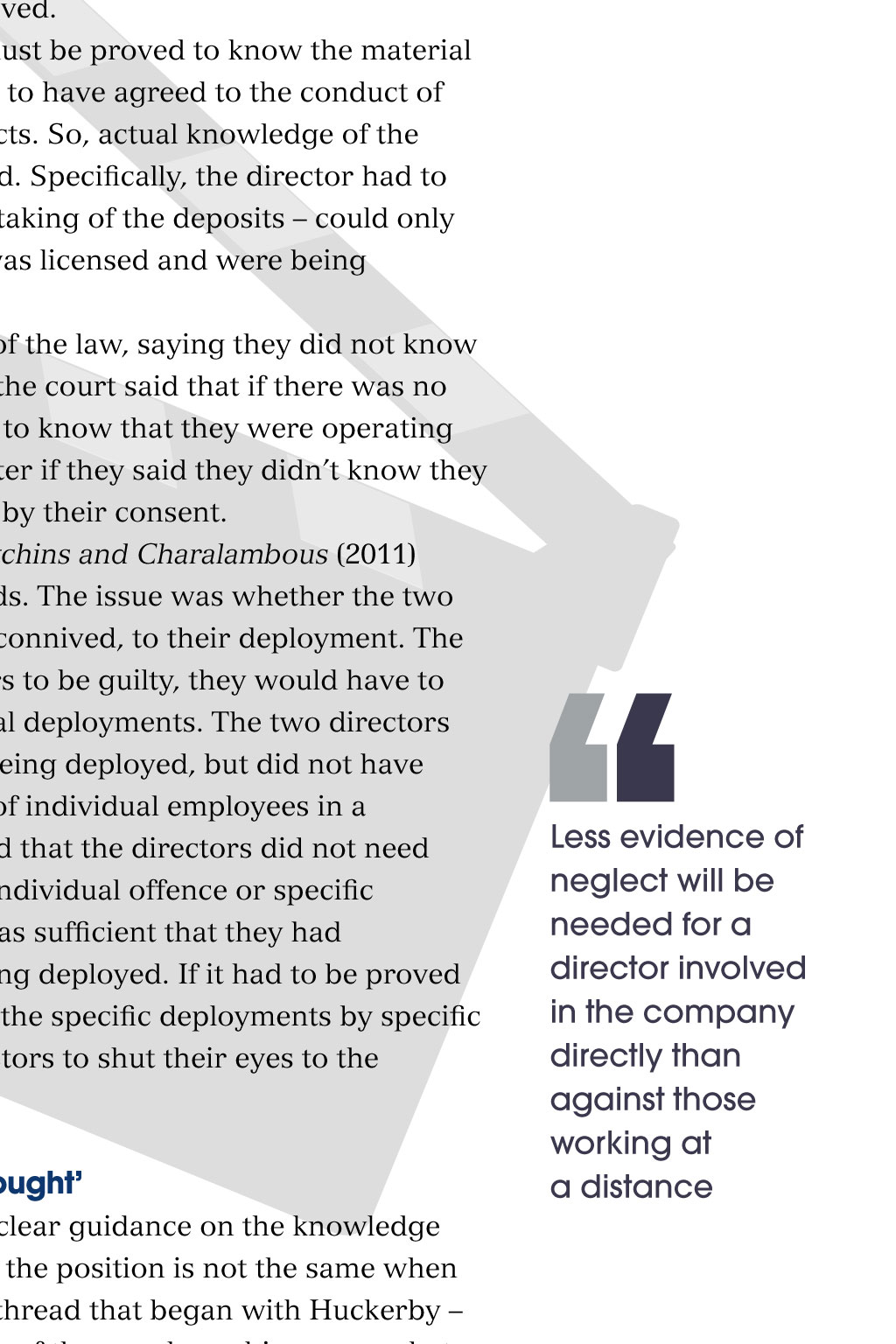
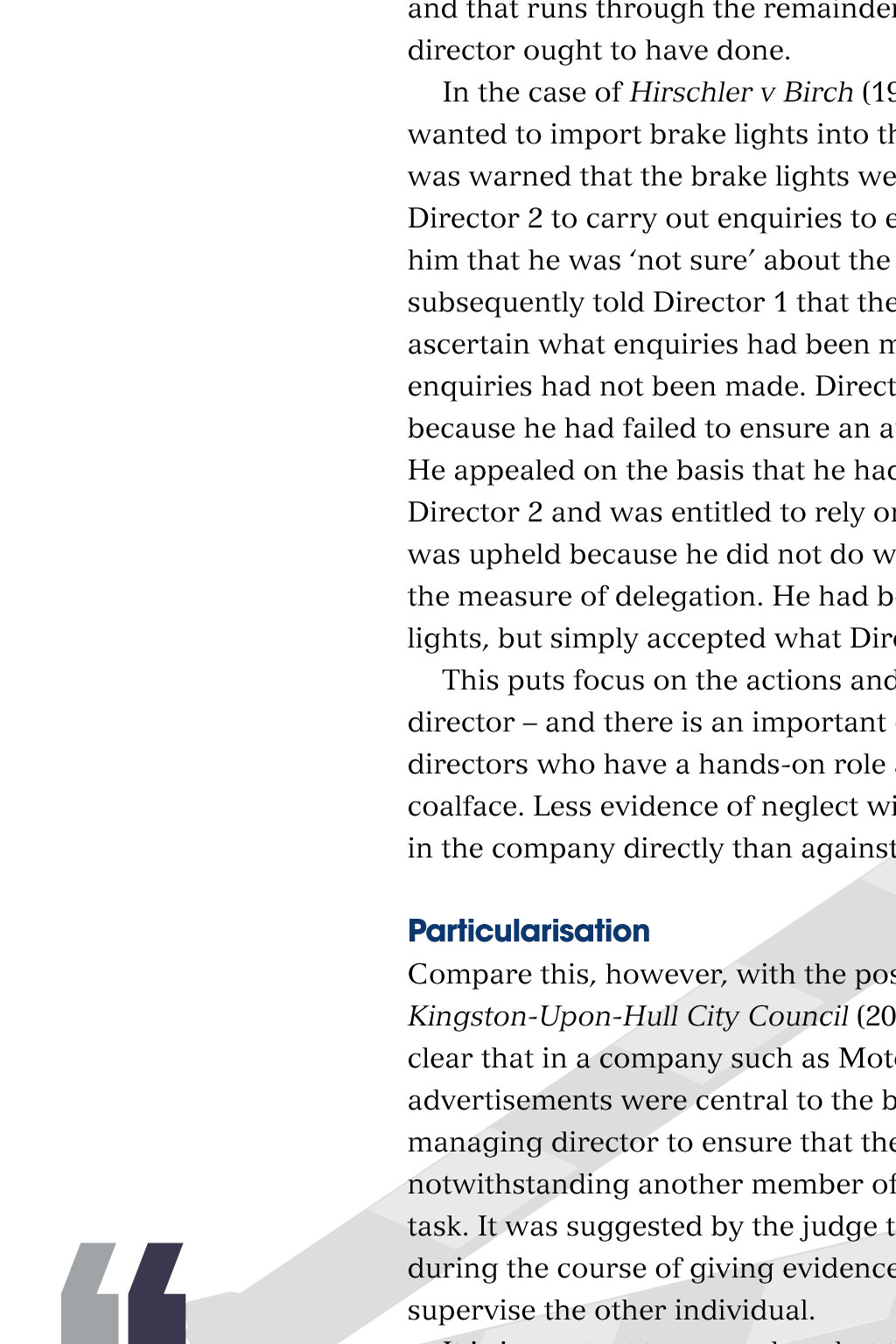
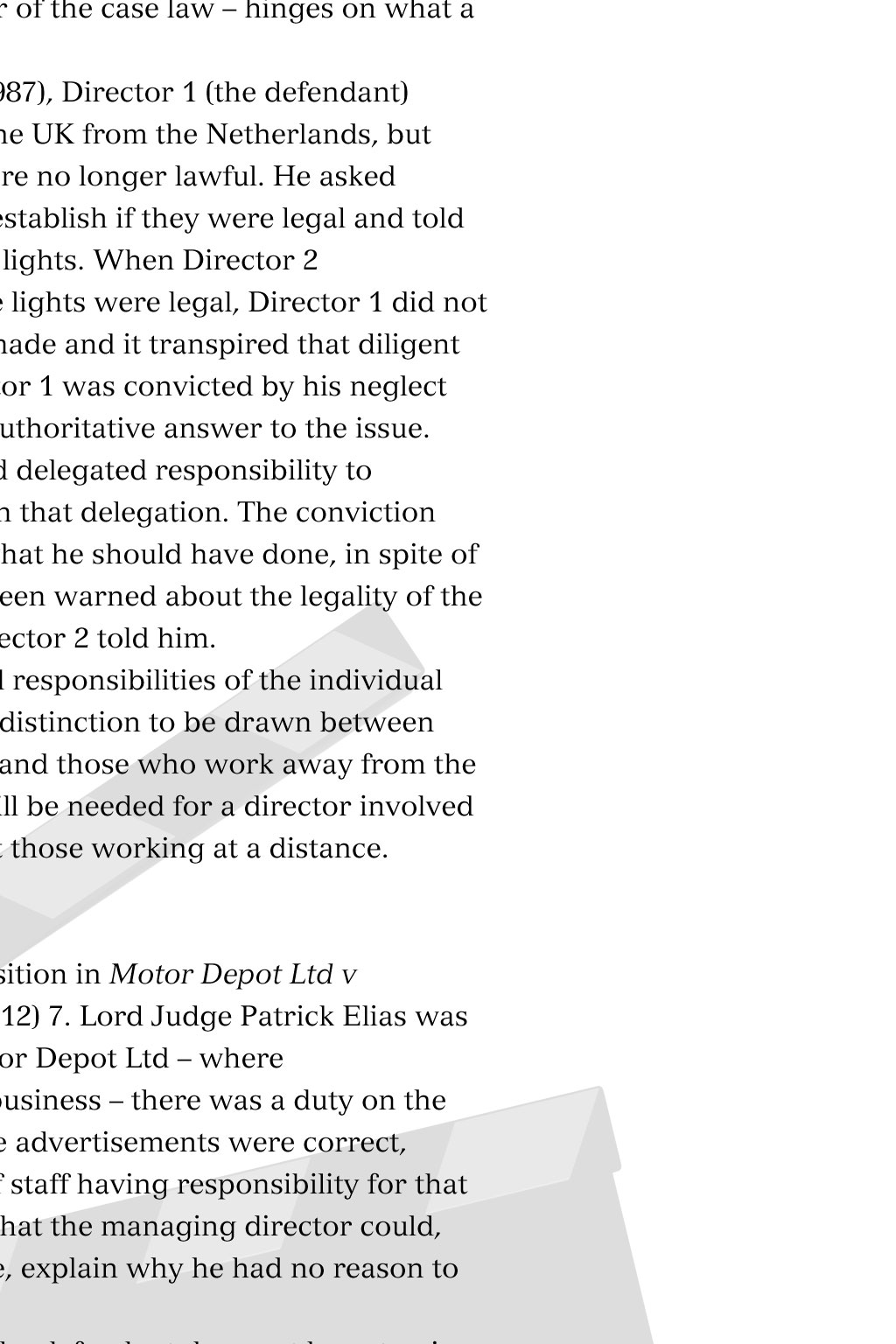




















Legal perspective on Lord Sumption judgment in Boyle Transport Northern Ireland case In this feature corporate veil evasion principle concealing identity Piercing the corporate veil Directors can be legally separated from corporations in confiscation cases. Barnaby Hone explains how The corporate veil is a much discussed, but much misunderstood phrase. When Lord Halsbury LC stated in Salomon v A Salomon and Co Ltd [1897] AC 22 that a limited liability company was to be viewed like any other independent person with its rights and liabilities appropriate to itself, he embedded in law the idea of corporations having a separate legal identity from their directors. That principle is agreed. What has been in dispute and is still uncertain to a degree iswhen that separation can be set aside. In confiscation cases, it can be done. It can also be disregarded or circumvented, depending on the situation. This can be seen in cases such as HM Customs and Excise v Hare and Others [1996] EWCA Civ 1351, a case under the Criminal Justice Act 1988. A recent example of this is CPS v Jennings [2008] UKHL, a case that was decided alongside Rv May [2008] UKHL 28. clear planning The efforts of defendants to use the corporate veil to minimise calculations of benefit or realisable amount can be avoided by good clear planning, before the charges are brought. As with all cases, an early assessment needs to be made as to whether the charges will result in an appropriate confiscation at the conclusion of the proceedings. This includes assessment of whether the likely benefit figure from the current charges accurately reflects the defendants benefit. Charges that go against a corporate defendant should also be considered. The available assets of the likely defendants need to be considered early and the following questions asked: What person or body holds the assets? Is there a need for a restraint order? Does more work need to be done in tracing other assets? Are there any tainted gifts? The corporate veil can be pierced if the sole purpose of the company is to conceal the identity of the real actors behind it Alongside prosecuting those who have committed crime, we should also remove the benefit of the crime from the offenders. It is clear after the decision in R (Virgin Media Ltd) v Zinga [2014] EWCA Crim 52 that private prosecutions can include confiscations. Therefore, making sure that the confiscation order reflects the totality of the offending should be a key consideration throughout the proceedings. If the questions above are answered early on, this will assist in deciding what charges to bring and against whom, the acceptance of any pleas and basis thereof, and submissions on sentence. A degree of clarity has been given by two recent decisions: the Supreme Court decision in Prest v Petrodel Resources Limited [2013] UKSC 34 and in Boyle Transport (Northern Ireland) Ltd v R; Boyle and another v R [2016] EWCA Crim 19. In Prest v Petrodel, an ancillary relief case, Lord Sumption set out to clarify the law that has developed since Lord Halsburys judgment in Salomon v Salomon. Though he might have been clear in his judgment, his findings on this point were obiter,* because the issue of the corporate veil as is often the way was found to be secondary to the outcome of the matter. In Boyle v R, the Court of Appeal clarified how judges in the lower courts should approach the veil, and laid out clear guidelines. It was made obvious by the court that the company law principles of piercing the corporate veil applied and that judges should not take a broad brush approach. Lord Sumption set out in his judgment two ways in which the corporate veil can be pierced though he makes it clear that the first way is a rejection of the existence of the corporate veil. For our purposes, this nuisance does not need to be analysed. The scope of inhabitants interests First, the corporate veil can be pierced if the sole purpose of the company is to conceal the identity of the real actors behind it. In this case, the court needs to look through the company to discover who was operating it. If the defendant is operating as the company, then the companys benefit should be assessed as his. This is the reasoning in R v Sale [2013] EWCA Crim 1306 and R v McDowell and Singh [2015] EWCA Crim 173. Where it gets complicated is when the company is being used for a legitimate purpose as well as an illegitimate one especially if the corporate body itself is not subject to charges and if the company is operated by a number of directors, some legally, some not. The evasion principle The second part of Sumptions judgment is the evasion principle. The court may disregard the corporate veil if there is a legal right against the person in control of it that exists independently of the companys involvement, and a company is interposed so that the separate legal personality of the firm will defeat the right or frustrate its enforcement. Though this is seen as the true piercing of the corporate veil, it is very often not used, because it is a last resort, and there is usually some other form of remedy. In confiscations, it will almost always be the first limb that is used. R v Boyle was different from a lot of other corporate confiscation matters. The two defendants each owned 50 per cent of the company and effectively managed it as directors. They conspired with a number ofdrivers employed by the company to make false instruments in relation to the tachograph records relating to the use of the companys haulage vehicles. In the confiscation proceedings that followed against the directors, the court found that the benefit was 50 per cent of the turnover of the company over the six-year period that was regarded as the relevant period. This was not a very refined decision because it did not take into account the legitimate earnings of the company. Since the end of the fraud and the beginning of the prosecution, the old company had been dissolved and the assets transferred to a new company. The available amount found against both defendants included part of the new company. After the defendants did not pay the order, the court imposed management receivers. The case was an appeal against the imposition of the management receivers by the new company. The Court of Appeal found that the crown court had misdirected itself on the law and incorrectly imposed the order. The court set out the following principles that should be taken into account in future cases: I. II. III. IV. V. VI. The key will be identifying the correct arguments to set out what the realisable assets are. This might involve piercing the veil or using other options to realise those assets The test is not simply a test of justice, which would be too vague and unprincipled The crown court needs to assess the reality of the matter, but without departing from established principles relating to the separate legal status of a limited company Confiscation is not aimed at punishment The principles pertaining to piercing the corporate veil in confiscation are the same as those that apply in the civil courts Regard should be had for the nature and extent of the criminalityinvolved Where a company is solely owned and controlled by a convicted defendant, it will not necessarily follow that the company is their alter ego Though they did it in six points, in essence the message is be careful, especially in cases where there is a legitimate company operating. Thisshould not be a deterrent for prosecutors to taking on cases wherecompanies are involved. Good planning and charging will be ableto take this guidance into account and allow confiscation of assets from defendants. What the prosecution and the court should have done in R v Boyle is to determine in more detail what the direct benefit was from the tachograph fraud. A case such as this with legitimate income requires careful analysis of what was legal income and what was not. There also needs to be an early analysis of the defendants assets. If this had been done in R v Boyle, there might have then been an argument that the corporate veil on the assets in the second company owned by the defendants could be breached. At the least, a realistic available amount would have been calculated. In essence, the issue with R v Boyle is that the correct arguments were not made, though in fairness to the court and counsel that was due, at least in part, to a lack of clarity in the law. Using the law to your advantage The contents of this column do not necessarily reflect the views of CTSI, nor do they always take account of the law in Scotland Now we have a relatively clear approach, the key is to plan the cases so these factors can be considered. Where a defendant has used a company to commit a crime, it will not be a block to him being prosecuted. Though the benefit will have to be carefully calculated, the key will be identifying the correct arguments to set out what the realisable assets are. This might involve piercing the veil or using other options to realise those assets. Though there will be arguments about the details of Lord Sumptions judgment in Prest v Petrodel and how it fits with the other judgment it is likely that this will take place in other legal areas. For confiscation practitioners, it is the effect of R v Boyle that will be crucial. *obiter dicta: a judges expression of opinion uttered in court or in a written judgment, but not essential to the decision and therefore not legally binding as a precedent. Credits Barnaby Hone is a barrister at Drystone Chambers. Images: istock.com / Jcarroll To share this page, in the toolbar click on You might also like Controversial move? July 2017